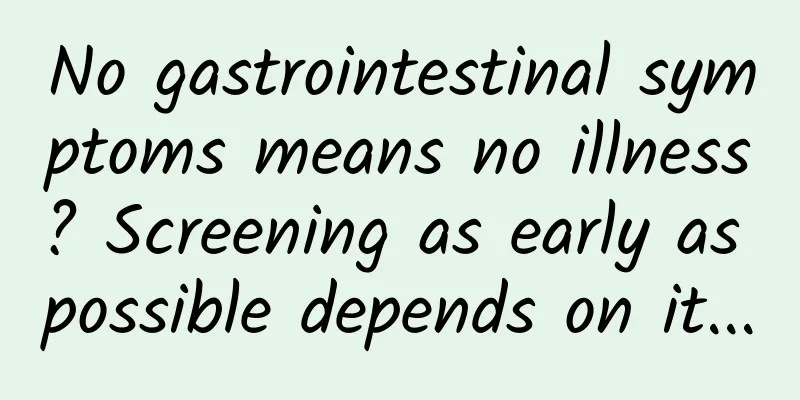No gastrointestinal symptoms means no illness? Screening as early as possible depends on it...

|
Last week, Ms. Gong (pseudonym) said this after undergoing a painless gastroscopy in the endoscopy room of our hospital. Examination items: painless gastroenteroscopy, conventional gastroenteroscopy, etc. Health Science 1 No symptoms means no illness? Not necessarily! Many people have misunderstandings about gastrointestinal diseases, thinking that if there are no symptoms, then there is nothing to worry about. In fact, early digestive tract tumors often have no obvious symptoms , and this "asymptomatic" performance is precisely a major feature of early digestive tract tumors. We should not ignore the examination just because there are no symptoms. Especially for people at high risk of gastric cancer and colorectal cancer, screening should be carried out as soon as possible after reaching a certain age. 2 How to detect gastrointestinal diseases early? Gastroenteroscopy is the best choice. It is an intuitive and visual examination method. In addition to helping us diagnose gastrointestinal diseases such as gastric ulcers, gastric polyps, and inflammatory bowel disease, it can also screen for early gastrointestinal tumors and detect precancerous lesions such as atrophic gastritis and intestinal polyps. At the same time, a pathological biopsy can be taken through gastroenteroscopy to confirm the diagnosis; and treatment operations such as polypectomy and early cancer resection can be performed. 3 Who are the high-risk groups for gastrointestinal tumors? Those who meet any of the following items (1) and (2)-(6) should be classified as a high-risk group for gastrointestinal tumors: (1) Aged 40 or above. (2) Those from areas with a high incidence of gastrointestinal tumors. (3) Gastrointestinal symptoms (abdominal distension, abdominal pain, nausea, vomiting, dysphagia, black stools, bloody stools, etc.). (4) Family history of gastrointestinal tumors. (5) Patients with precancerous diseases or precancerous lesions of the digestive tract (esophageal leukoplakia, chronic atrophic gastritis, chronic gastric ulcer, multiple adenomatous polyps of the colon, intraepithelial neoplasia, etc.). (6) Having other high-risk factors for gastrointestinal cancer (smoking, heavy drinking, head and neck or respiratory tract squamous cell carcinoma, long-term consumption of high-salt and pickled foods, etc.). |
<<: Characteristics of oral ulcers and their prevention and treatment
>>: Children's eyes itch in spring, beware of allergic conjunctivitis
Recommend
Why don't you eat cherries on the train? What should I do if I get a sore throat after eating too many cherries?
Cherries are a common fruit in our daily life. Th...
What acupoints should be massaged for irregular menstruation
What acupoints should be massaged for irregular m...
Why is the fetal movement so strong at 7 months of pregnancy?
We all know that for pregnant women, the most wor...
When is the best time to practice Tai Chi? Can I practice Tai Chi after breakfast?
Tai Chi is influenced by traditional philosophy, ...
What is the reason for yellow vaginal discharge?
Anyone who pays attention to women's health m...
What are the symptoms of uterine fibroids?
Some women do not know that they are suffering fr...
9 dietary tips to improve a woman's personality
Whole grains: The chatterbox People who talk ince...
What is the reason for the delay of 12 days?
We all know that menstruation is a unique physiol...
Is it necessary to supplement estrogen in time after menopause?
Many people are considering whether we should sup...
Scientific prevention of blood-borne infectious diseases
Scientific prevention of blood-borne infectious d...
Why is my leucorrhea so thick?
Leucorrhea is a normal physiological characterist...
What causes girls' loose skin?
The condition of the skin determines our mental a...
Which department should I visit for breast nodules?
With the accelerated pace of social development a...
National Nutrition Week | Nutrition and Health Science Rumors List
Nutrition and health science rumor list released!...
Female palms are hot
When the palms of female friends feel hot, some o...









